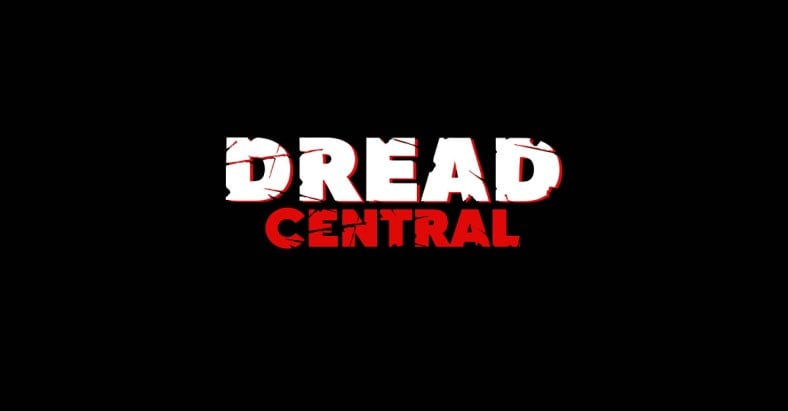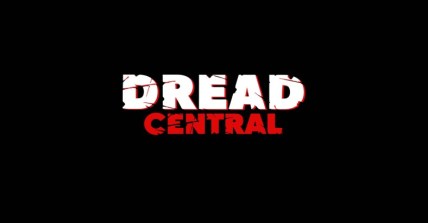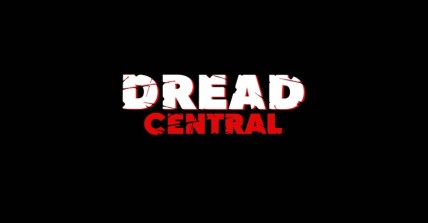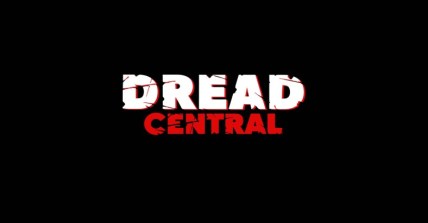Annabelle: Creation Set Visit Interview with Peter Safran

Peter Safran is one of the hardest-working, best producers in horror today. He’s the guy who brought us The Conjuring films and the first Annabelle. Before that, he was more known for thrillers (Buried) and spoofs (Scary Movie).
Annabelle: Creation takes place in the 1950s, several years after the tragic death of a little girl, the daughter of a dollmaker and his wife. The scares pick up when the still-grieving couple welcome a nun and several girls from a shuttered orphanage into their home… the unsuspecting boarders soon becoming the target of Annabelle, a possessed doll.
We got the chance to talk with Peter on the set between takes. Here’s what he had to say.
Dread Central: Are you going to make a career of horror movies now?
PS: I was always a huge fan of genre movies, but I hadn’t made one before The Conjuring. I just I hadn’t found a great story to tell. Then when I heard about the Ed and Lorraine Warren of it all, the backstory, and it was just, ‘[this is] is exciting.’ So I put that together and subsequently the whole Conjuring universe that has spawned out of it has become a natural progression.
DC: Will you make more Conjuring and Annabelle movies?
PS: I think as long as we have good stories to tell, yes. I mean, we were not even going to do a sequel to The Conjuring unless we felt, and I think we said this at the time, that it was going to be a worthy successor to a much beloved movie. And so that’s why it was so important to be able to do that, and we did. I think we’ll keep making movies in that universe as long as we have good stories to tell. I think this Annabelle story is a great one, it being a sequel and the origin story. It is a great origin story and obviously teases us up for more to come, post the original Annabelle. So I think yeah, as long as we have good stories to tell we’ll keep doing it. I think a lot of people, when they saw the first Annabelle, certainly when they saw The Conjuring, were fascinated as to where Annabelle came from. It was kind of a natural question that kept coming up and so we thought it was a great opportunity to answer it. Just out of the group of James Wan and Gary Dauberman and the guys over at New Line, as we batted around ideas, it’s the one that really took hold. The one that we thought would be most satisfying for the fans.
DC: How did you pick David F. Sandberg to direct this?
PS: That was easy, that was very easy. I saw Lights Out very early. Obviously the studio had made the movie, and they were incredibly happy with it. James had worked with him on Lights Out and thought he was terrific. Once I saw the movie, it was evident that he was a guy who was truly steeped in crafting intelligent scare sequences. There was no doubt. He was the only guy we went to on it, so that was it.
DC: Is it easy cast kids for these movies?
PS: Yeah, we’ve gotten so used to working with kids because the original Conjuring had a bunch of kids in it. Conjuring 2 had a bunch of kids so it, and it wasn’t that daunting, other than from the production perspective of your hours are shorter, and you’re limited in the way you can schedule things, but that wasn’t too daunting. Then in the casting process, we always seem to find good kids. If you give yourself enough time and you spread the net wide enough, you’re really able to come up with great kids. I thought in Conjuring 2 Madison Wolfe was amazing. We really scoured the universe for available actors for it, and I think we came up with a really great group.
DC: Lulu Wilson is the star of Annabelle: Creation, basically?
PS: Yes. It is amazing because she’s ten. You sit and talk to her and realize she’s been on more movie sets than most producers. She’s articulate and just loves the genre. I’m sure you talked to her about Ouija: Origin of Evil as well. I think when we hired her, I don’t know that we realized how big her role was in Ouija, and she came in and did a great audition. She’s wonderfully articulate. When you talk to Talitha, same thing. She’s older so it’s a little more expected, but when you talk to Lulu, she’s ten and it’s like ‘Where did this come from?’
DC: How do you know you have the right kid?
PS: You know, it is remarkably evident from the auditions. You really do watch an audition, you watch hundreds of auditions, and you think, you know, ‘Maybe there’s just nothing on the page and that’s why there’s nothing good,’ and then you’ll suddenly see a person who stands out. All ten people who have a voice in the casting, say, ‘Oh this is it, this is what we were waiting for.’ So you have to be patient with it, but it’s really clear. I think I can say this, Talitha was actually the runner up for Conjuring 2, it was between her and Madison for that role, so she was very much on our radar.
DC: We heard you had this set blessed by a priest before cameras started rolling.
PS: Yeah, we did. We had no problems on the Conjuring 2 set, no issues, no nothing [after blessing it], so we thought we’d be foolish not to at least purify the set once again. Particularly because Sister Charlotte, who’s played by Stephanie Sigman, really, really wanted us to. It was very important to her. She comes from Mexico, a much more religious background, particularly [through] her grandmother. Her grandmother is not very happy she’s even doing this movie, but if you’re going to do the movie at least bless the set.
DC: Will Annabelle: Creation be rated PG-13?
PS: You know, we don’t know yet. [Editor’s note: It’s been given an R rating.] We never plan with these movies a specific rating. We thought the original Conjuring would be PG-13 because there was no blood, nobody dies, there was no language issues, no nudity… and it came back R rated just for intensity, which is a very unusual result. I don’t think anybody expected that, but we ended up with the same thing on Conjuring 2 so we’ll see. We make the best movie we can without really an eye towards whether it’s an R or PG-13. Whatever it is, it will be. PG-13 really broadens your audience so it’s a nice thing but yeah, I don’t think we give too much thought to it. I think we have a sense of what the tone should be, you know in this one perhaps there’s more death than in others, but it’s not The Purge. It’s not an inherently violent film, so it could easily be a PG-13. We go into it trying to create the best sequences, the best scares that we can based on really well drawn characters that we establish early on, and hopefully when they go through what they go through, you actually care.
DC: Do you think about the MPAA while filming the scary scenes?
They tend not to effect the rating. Because the way it is on the page – is somebody dying, is somebody getting stabbed, is there nudity – it’s all basically… you know where it stands, but it’s the cumulative effect of all those scares that might tip you into the R rating. It’s not one particular scene because when The Conjuring was given the R rating we said, ‘OK, what can we change to get PG-13?’ And they’re like, ‘You can’t, there’s nothing, because it’s the cumulative effect of your scares. It’s not like, take out this bit of blood or take out this thing, it’s just the cumulative effect.’
DC: What’s your secret for success?
PS: Well you know, we have a very special secret called James Wan. He is our secret sauce. I think [another thing is] we don’t rush into making them, we’re not chasing a release date. It was three years between the first Conjuring and the second Conjuring. I think we really do all believe that we’re not going to make a movie unless we think we can do something special with it, at least going in, so maybe that’s part of it. We’re not overloading the system with having to do so many a year. James creates the overall vision and tone: Let’s not do something unless we have a point of differentiation of what’s come before. So we all kind of have that in our minds. We try to hire good filmmakers whenever we can, and surround them with the right people. We used a lot of the same team from the original Conjuring, did Conjuring, did Annabelle, did Conjuring 2, doing Annabelle 2 now. With tweaks along the way, but we use a lot of the same people. I think that really helps to give it a consistent tone and feel. And then the group of us, New Line, Warner Bros., James and I as producers, I think we bring a consistent vision to it. It helps but it’s still tough. I mean, how many good scary movies come out a year? There aren’t a lot. We treat it very seriously. It’s not in any way a throwaway, in terms of commercial cash grab. We actually look at these movies as making good movies.
DC: So you’ll be working together a lot with the same team in the years to come?
PS: That is kind of the goal. New Line is a company that is steeped in making horror movies, going way back when, and when they bought The Conjuring. We brought James into it when we had the script. There was definitely an intent and a vision to use this team and build out not just a franchise, but potentially a universe. We kind of took it just one step at a time, to make sure we were doing it right, and it’s worked out well. James, even when he was directing Fast 7 and we were shooting Annabelle, was always available or reachable to say ‘OK, here’s a thought that we have, a question that we have or sequence that we have, how do we make it better?’ So I think that was really an important part of the process that allows us to do it.
DC: Do you or the crew take the Annabelle dolls home with you?
PS: No. We keep them at Warner Bros., because none of us wanted them in our house. We had the option to take them home, but I don’t want them in my house. So they’re at Warner Bros. We’re using new [dolls] built from scratch. They are just a little sturdier for us to use from an actual production perspective, because the ones we used in the first movie and in The Conjuring, they were built by a doll maker in Wilmington, North Carolina, and they were never meant to have the lasting durability that we actually need, so these are new ones. There are multiples because they tend to go through a couple different phases of the look of the actual Annabelle doll over the course of the shoot, and you just need more because they tend to get bashed around a little bit.
DC: Why don’t these movies win awards or get much respect, in your opinion?
PS: You know, I have that question frequently because particularly the reviews of the first Conjuring – the second Conjuring had good reviews – but the first Conjuring, great reviews. It is surprising that it doesn’t get attention from a critical perspective in terms of awards, like the Saturn Awards. [Like] Kathy Bates in Misery, it’s a genre movie that she won the Oscar for which is incredible, but I think you have to go back. People used to look at Kubrick, Hitchcock, in a different way. They were awards-worthy and today it’s kind of fallen out of people’s mindset. Movies like It Follows, The Babadook, Conjuring, I think they stand, in my opinion, toe to toe with movies from any other genre that are getting respected. I think you look at Patrick Wilson and Vera Farmiga in both movies, or Madison… the fact that Madison is a 12-year-old girl from Louisiana, an all-American girl, playing a British lower social economic class, council house living possessed girl from 1977 Britain, and doing it beautifully [is noteworthy]. Even in England nobody said her accent’s not working right, [only] that it’s an incredible performance. I think she should get more attention for it than she actually gets, but it is a bit of the nature of the beast that these movies tend not to get the critical respect they deserve.
DC: Any reason you’re shooting here in Los Angeles?
PS: Well, on Conjuring 2 the reason why was James Wan wanted to shoot in L.A., so it was a very simple discussion. And we also got the California incentive, so it was great. The same thing here, we got the incentive for Annabelle 2, so it made sense to stay here. We put together a super deep crew base here, great actor base, and it makes sense to do it here if you can get the incentives. We were fortunate enough to do it. Stage space is at an incredible premium in Los Angeles, it’s almost impossible to find anything, so there was a good chance we were going to have to leave, and then this stage opened up at the very last minute. It was on hold for a pilot that didn’t go forward, and so we grabbed it. Also truthfully, being here gives us far more access to James Wan as opposed to if we were in Louisiana or anywhere else, so it really makes sense from that perspective as well. His office is ten paces from here and we can bring him in to look at it, as we’re laying out the floor plan for the house, as we’re building the staircase; it just gives us more access and that’s worth a lot.
DC: Will there be more sequels?
PS: Yeah, I think it’s very viable. I think it’s a genre like any other genre – so comedies work, dramas work, action works, horror works, when you do good versions of them. It’s hard to generalize, is horror on an uptick or on the downslide? It really depends on how good the movie is that you make, so the fact that The Conjuring 2 could [surpass] three hundred million dollars worldwide, is a real testament to people who love horror. When you deliver something that they think is worth the price of admission, particularly internationally, which is even bigger than it was before, [they will come to the theater]. In the first Conjuring, we had Annabelle specifically as a character to spin off, so I think we always thought there was a way to do that. And then the debate was, once The Conjuring was a big success, how to do it, and if we’re going to do it, what will that look like? Will it dilute The Conjuring franchise if you do a spinoff, a more modestly budgeted version, is that a problem? And so I think the studio thought, ‘Let’s make it for a price which we did, then we can judge if it merits the three thousand print release.’ I think when we did our first test of it, it was evident that it did, despite being made for a fifth of the next smallest movie that New Line or Warner Bros., had ever made, it just made sense to put it out there. I think it really established movies being made for a price at the studios, and still being big commercial successes.
David Sandberg directs from a screenplay by Gary Dauberman, who also wrote Annabelle. The film stars Stephanie Sigman (Spectre), Talitha Bateman (The 5th Wave), Lulu Wilson (Ouija 2, Deliver Us from Evil), Philippa Coulthard (After the Dark), Grace Fulton (Badland), Lou Lou Safran (The Choice), Samara Lee (The Last Witch Hunter), and Tayler Buck in her feature film debut, with Anthony LaPaglia (TV’s “Without a Trace”) and Miranda Otto (Showtime’s “Homeland”).
Serving as executive producers are Toby Emmerich, Richard Brener, Walter Hamada, Dave Neustadter, and Hans Ritter. Collaborating with Sandberg behind the scenes from his Lights Out team are production designer Jennifer Spence, editor Michel Aller, and composer Benjamin Wallfisch; they are joined by director of photography Maxime Alexandre (The Other Side of the Door) and costume designer Leah Butler (Paranormal Activity 3 & 4).
Currently scheduled for release on August 11, 2017, Annabelle: Creation is a New Line Cinema presentation, an Atomic Monster/Safran Company production. The film will be distributed by Warner Bros. Pictures, a Warner Bros. Entertainment Company.
Synopsis:
Several years after the tragic death of their little girl, a dollmaker and his wife welcome a nun and several girls from a shuttered orphanage into their home, soon becoming the target of the dollmaker’s possessed creation, Annabelle.

Categorized:News





